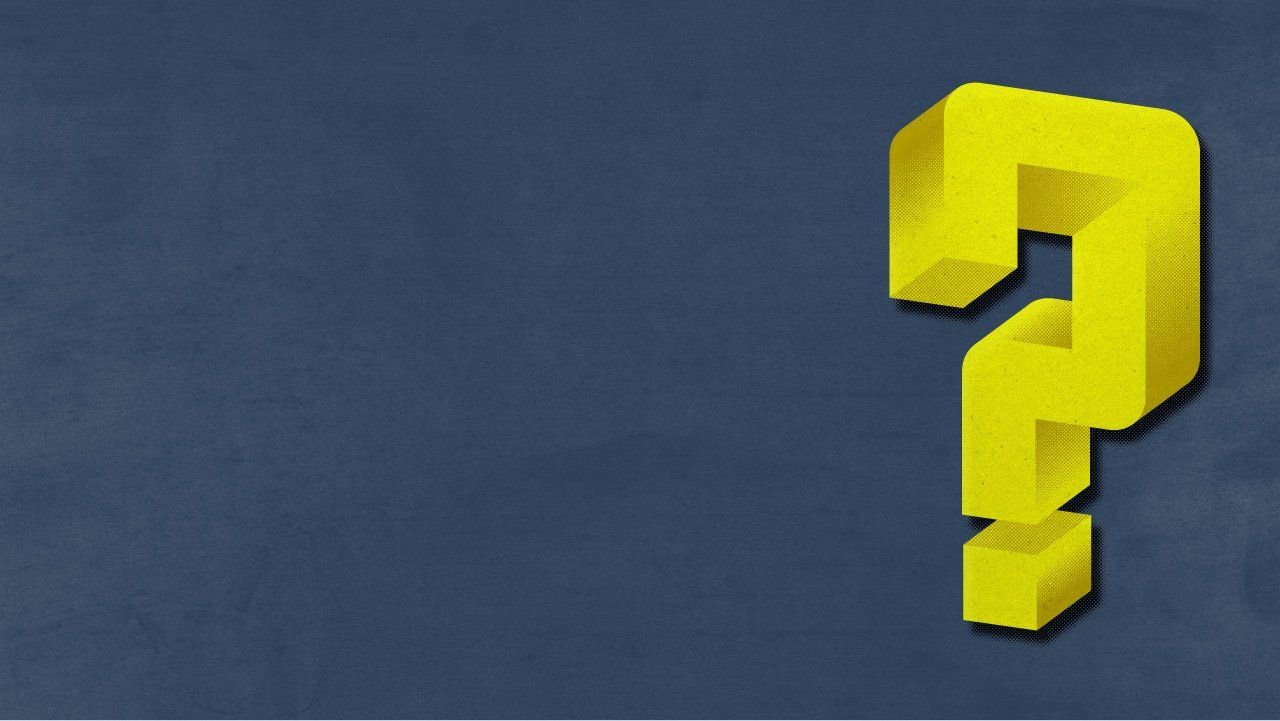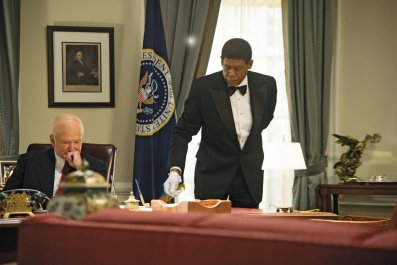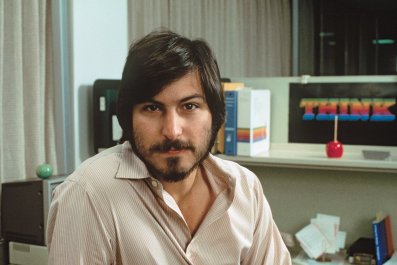In a flat expanse of southwest Las Vegas, six miles from the gaudiness and glitz of the Strip, sits the massive South Point Hotel, Casino & Spa. Enter its cavernous "gaming floor" and one is immediately pulled into a world of middle-aged waitresses in skimpy costumes, geriatric gamblers, and men in tanktops—arms invariably graffitied with tattoos—scanning The Racing Form.
But during a four-day stretch in mid-July, these stereotypical Vegas denizens shared the hotel with a very different, very un-Vegas crowd. On the far end of the casino and up an escalator, in a windowless conference center, there was an annual convention taking place called The Amazing Meeting—a gathering known to attendees simply as TAM.
TAM is organized by the James Randi Educational Foundation (JREF), a group devoted to a philosophy called skepticism: the debunking of psychics, mediums, pseudoscientists, faith-healers, homeopaths, and anyone else who makes claims that defy the known laws of science. Skepticism has a wide following—the Internet is littered with self-proclaimed skeptic blogs, podcasts, and forums—and JREF is widely acknowledged to be the movement's hub. Over 1,000 people attended this year's conference, which featured an array of panelists and speakers, from magician Penn Jillette to comedian Father Guido Sarducci to Steven Novella, a professor at the Yale School of Medicine. (And yes, it was ironic that this militantly rational group decided to hold its annual meeting in a casino.)

The activists of TAM see themselves as waging a broad, multifront battle to drag American culture, inch by inch, away from the nonscientific and the nonlogical. This turns out to be a surprisingly uphill struggle. Probably the majority of Americans believe in some degree of what JREF's founder, James Randi, calls "woo-woo." ("Please use woo-woo," he instructs me. "I'm trying to get it into extensive use.") In 2005, for instance, Gallup found that 73 percent of Americans subscribed to at least one paranormal belief. Television personalities like John Edward earn huge audiences by purporting to commune with the dead. Numerous Americans swear by homeopathy, ingest supplements with no proven medical benefit, or believe, against all available evidence, that genetically modified organisms might transform humans into tumor-covered golems.
Indeed, whether it's feng shui consultants rearranging your apartment's "energies" or alternative medicine advocates pushing dubious internal "cleanses," woo-woo is very big business in the United States. "People like the flavor of bullshit, the aroma," Randi says. "It's very rare that people will stand for a complete lack of bullshit in anything."
During a 2010 address to TAM, Slate science writer Phil Plait conceded that he "sometimes wonders" if the goals of skepticism are "reasonable." Not because the arguments themselves are deficient, but because most people aren't predisposed to question extraordinary claims. "Our brains don't work that way," Plait argued, because they "aren't wired for skeptical thinking. They're wired for faith." And therein lies the central challenge for the skeptic movement: if we're genetically predisposed to magical thinking, if we desire a certain amount of bullshit in our everyday lives, can a group of people ardently opposed to superstition ever really win?

RANDI, A.K.A. James "the Amazing" Randi, is the closest thing the movement—almost everyone I talked to called it "the movement"—has to a leader. Now an energetic 84 years old, his face swathed in a wild, white Charles Darwin beard and eyebrows crawling up his forehead like albino caterpillars, Randi was once one of America's most recognizable illusionists and escape artists. But in the 1970s, his career took a more serious turn. Like Harry Houdini, who late in life focused his talents on debunking mediums and psychics, Randi turned his attention from performing magic to exposing magic masquerading as the supernatural. (In his bestselling book Every Day Is an Atheist Holiday, Penn Jillette writes, "James Randi is my hero. James Randi is the modern Houdini, except better.")
In the course of numerous appearances on The Tonight Show Starring Johnny Carson, Randi introduced Americans to skepticism without labeling it as such. It was on The Tonight Show that he famously assisted Carson, an amateur magician himself, in exposing the popular—and widely believed—spoon-bending psychic Uri Geller. He later replicated Geller's supposed ability to mind-read for Barbara Walters, who had previously been convinced that his trickery was genuine psychic ability. Carson also gave Randi a platform to expose the television faith healer Peter Popoff, whose divine messages revealing private details of his congregants' lives were in fact worldly messages from his wife, delivered via a wireless earpiece.
Randi proved to be a relentless proselytizer and prosecutor, attacking a wide range of targets—from the homeopathy industry, which he mocked by consuming an entire bottle of homeopathic "sleeping pills" on stage, to Sniffex, a nonfunctioning bomb-detecting device used by the Iraqi military. When I called him a "debunker," he replied that he prefers to think of himself as an "investigator" of supernatural claims. But when I asked him if he had ever investigated a psychic phenomenon without debunking it, he chuckled, and said, "That has not happened, no."
One gets the feeling that he doesn't expect it to: JREF has long offered a million-dollar prize—officially known as the One Million Dollar Paranormal Challenge—to anyone who can demonstrate, under strict test conditions, psychic ability. The money still sits untouched in a New York City bank account.
AS SOMEONE largely on board with Randi's worldview, I nevertheless came to Las Vegas with some questions about the movement. For starters: what does it actually mean to be a skeptic?
"The word is not defined well enough," Richard Saunders, president of Australian Skeptics, told me. "And it's used by everybody. The best definition I can give you about where we come from is, we are skeptical of any claim that contradicts the known laws of physics." Jamy Ian Swiss—another key player in the movement who is, like Randi, a magician—says that skeptics are constantly debating the utility of the label. "I've never been involved in a local skeptic group that didn't get around to saying, 'Can't we think of a better word that's not so negative?' I've never not heard that question."
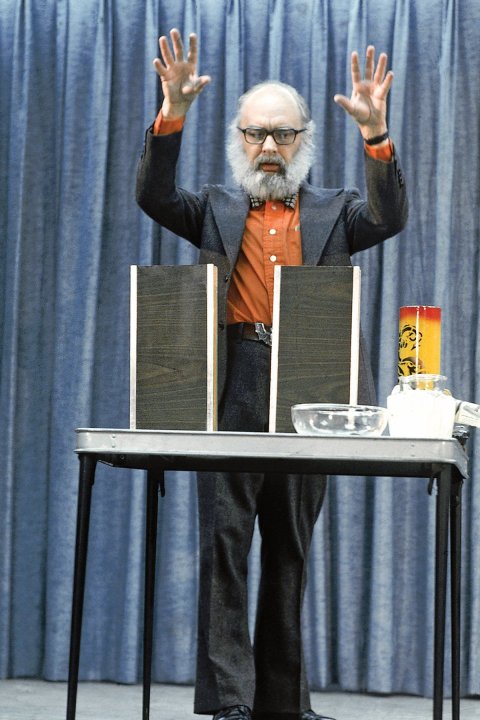
JREF's goal, according to its website, is to "expose paranormal and pseudoscientific frauds in the media, and hold media organizations accountable for promoting dangerous nonsense." The Skeptics Society, publisher of Skeptic magazine, describes its mission as an effort "to engage leading experts in investigating the paranormal, fringe science, pseudoscience, and extraordinary claims of all kinds, promote critical thinking, and serve as an educational tool for those seeking a sound scientific viewpoint."
But aren't these merely descriptions of plain old science? Saunders says there is an important distinction. "We especially go after these claims that are against the laws of physics, while generally science is the study of nature," he explains. In other words, science tends to ignore ghosts, goblins, levitating yogis, and mind-reading mediums claiming an ability to commune with the dead. "We're not doing science. We're advocating for it," Swiss explains. "We're advocating for using science as a way to view the world and solve the problems of the world."
One of the challenges facing skepticism is that any number of different groups have appropriated the word. Holocaust deniers call themselves "Holocaust skeptics." Those who claim that the MMR vaccine is behind an increase in autism among children are often labeled "vaccine skeptics" in the media.
Such fringe views are clearly rejected by the skeptic movement. The issue of climate change, however, has proven a bit more complicated, and has caused something of an internal rift. Conservatives who doubt that global warming is taking place have labeled themselves "global-warming skeptics," and their point of view—though very much at odds with the scientific consensus—has made some inroads among skeptics themselves. Randi, for instance, says that while he is "seeing the evidence more in favor of anthropogenically caused global warming," he is "not totally convinced." "I'm skeptical of it," he adds, "and that is a healthy attitude."
This year's TAM hosted an address by Michael Mann, a renowned climate scientist and adamant defender of the scientific consensus that global warming is real. His selection as a speaker angered some participants; TAM speaker Robert Sheaffer compared him with a "creationist." After Mann's talk, I asked him why people who are skeptical of man-made global warming shouldn't be considered skeptics. "They reject accepted science based on the flimsiest of arguments that don't stand up to the slightest scrutiny," he replied. "They are not being skeptical, because their arguments are silly."
BUT THE arguments over climate change are nothing compared with the biggest rift in the skeptic movement: the rift over God. The debate is not over the existence of God—almost all the skeptics I met at the conference were nonbelievers. Rather, the argument is over whether skepticism should be synonymous with atheism, or whether the two movements should stay separate.
Jamy Ian Swiss, a close-up magician by trade, is one of the chief advocates for the latter view. Swiss lives in Southern California but is New York through and through. He's voluble and opinionated, delivering withering judgments with the kind of lilting Brooklyn accent that one rarely hears in today's Brooklyn. He's a left-wing Jew who disdains religion ("The rabbi and the cantor were such assholes that they turned me into an atheist by the day of my bar mitzvah") and is obsessed with science. He isn't an academic, but his references to radical journalist I.F. Stone and knowledge of scientific history might persuade you that he should have been.

Addressing a group of California atheists in 2010, Swiss delivered a barbed speech on the relationship between skepticism and atheism. "Read my lips: there is no fucking God," he roared. "But that is my personal belief, it's not my public cause. My cause is scientific skepticism." After the speech, PZ Myers, a widely read—and notoriously prickly—academic and science blogger, denounced "asshole" Swiss's "incredibly repellent talk" and announced that he would "no longer consider myself a 'skeptic.' " The skeptic world, as it so frequently does, convulsed with charges, countercharges, ad hominem, and endless debates over whether God is a "testable scientific claim" or whether guys like Swiss were selling out atheism in an effort to expand the movement's popularity.
At the conference in Las Vegas, I spoke to Daniel Loxton, author of a children's book on evolution and co-author of the recently released Abominable Science!: Origins of the Yeti, Nessie, and Other Famous Cryptids. He said that internal debates over atheism were relatively new to the skeptic movement. "After 9/11, some people started thinking tolerance [of religion] is dangerous," he explained. "And around 2005, with the emergence of podcasts and blogs, a bunch of entry-level skeptics came on the scene, attracted to the ethos of skepticism but their primary concern was atheism."
These strident atheists had beliefs similar to Richard Dawkins, Christopher Hitchens, and other writers who, in recent years, brought new energy to the atheist cause. The overlap between skepticism and the worldviews of these so-called new atheists was undeniable—and so it was no surprise that many of them gravitated toward JREF and TAM.
Yet not all skeptics were comfortable with new atheism's growing influence on the movement. Saunders of Australian Skeptics drew a distinction between traditional skepticism and atheism. "I'm what they label a Bigfoot skeptic," he explains, "which is the old school. I'm interested in looking at proof of paranormal claims, weird creatures, medical healings, spoon bending, talking to the dead—that's my game."

At TAM, the old school seemed to be winning the internal fight. Most of the people I met argued that religious believers should be welcome in the movement, as long as they didn't push ideas like creationism. "I know many religious skeptics, but we stay away from religion—except if someone has a bleeding idol statue," says Dale Roy, a former science teacher from New Hampshire and founder, with her husband, Travis, of the Granite State Skeptics. Saunders takes a similar position: "In Australian Skeptics, we don't care if you have a religious outlook."
Moreover, if not all skeptics must be atheists, it's also true that not all atheists are skeptics. It was frequently pointed out to me at TAM that comedian Bill Maher, a strident atheist, is dubious about vaccines. Swiss recalls that when he objected to his children reciting the pledge of allegiance in school—with its religious stipulation that ours was a "nation under God"—his wife, also a nonbeliever, created an Atheist Parent Meetup. "One of the parents showed up to the meeting and the first thing she asked one of the other parents was, 'What's your sign?'"
Still, no one would deny that skepticism and atheism are, at the very least, closely linked. "Can you be a skeptic and a believer in God? I find it almost impossible to believe," Randi told me. "As a skeptic, I have to be an atheist as well." One of Randi's heroes, the mathematician and ur-skeptic Martin Gardner, identified as a deist. "He said to me, 'I don't have any evidence whatsoever for being a deist. I can't beat you in an argument, but I do it because it makes me feel more comfortable.' That's the honest approach."
SPEND TOO much time amid this infighting and factionalism, and the skeptic movement can start to resemble a meeting of Occupy Wall Street, with its interminable debates over ideological deviation and philosophical purity. But I was reminded of the movement's value once I was back in the real world—and started noticing just how much woo-woo intrudes upon our daily lives. One night while in Vegas, I met up with a group of friends—who were in town at another, unrelated conference—and I struck up a conversation with a woman who seemed reasonably intelligent and decently informed. Interrupting her soliloquy on the importance of eating natural foods, I mentioned that I was afflicted with type 1 diabetes. Her eyes widened, savoring the opportunity to help. She offered something that no endocrinologist previously had: a possible cure. "Switch to a raw-food diet," she advised. Now my eyes widened. "You mean that raw food would help lower blood sugar?" I asked. "No, no," she said with exasperation. "It can cure diabetes." When I doubted that chewing on uncooked yams would kick-start my crippled pancreas, she accused me of lacking an "open mind."

Perhaps the best example of the skeptic movement's tenacious real-world influence has been its battle with a California-based company called Power Balance—manufacturers of wristbands that, when worn, were supposed to improve strength, balance, and flexibility, "safely restoring and optimizing the electro-magnetic balance within the human body," the company at one point claimed on its website. In 2010 alone, an estimated 2.5 million people wore them. Among those who sported the wristbands were Bill Clinton, David Beckham, Kate Middleton, Shaquille O'Neal, and countless professional athletes. Power Balance was making so much money that, in 2011, it purchased the naming rights to the Sacramento Kings' arena.
But Saunders smelled a rat. "I saw a report on a news program that said, 'Look at these amazing wristbands,' and they did the demonstration. So I wrote to the reporter and said, 'Look, I know how the tricks work.' " The reporter arranged for Saunders and Tom O'Dowd, who owned the right to distribute Power Balance in Australia, to test the bands on national television. "He failed five out of five tests. And that started the avalanche that led to Power Balance's downfall." Australian regulators intervened, issuing a finding that forced Power Balance to admit that it was selling a product that didn't work as it claimed. "In our advertising we stated that Power Balance wristbands improved your strength, balance and flexibility. We admit that there is no credible scientific evidence that supports our claims," the company conceded. Soon after, it filed for bankruptcy.
Today, visitors to Power Balance's website—which is now under new ownership—are met with vague and confusing claims. The bracelet's hologram sticker, it says, is "designed based on Eastern philosophies" and "many Eastern philosophies contain ideas related to energy ... There are a number of well known practices like acupuncture, meditation and Feng Shu [sic], which are believed to affect these energies. The hologram is based on some of these same ideologies."
But what was the trick that customers found so convincing? Scroll through YouTube and you'll find countless videos of people standing on one leg, arms outstretched, being toppled by tanned and toothy pitchmen applying a small bit of pressure above a test subject's elbow. With the bracelet on, the demonstrator, up against the Power Balance ionic force field, pushes and grunts. The subject remains standing.
At TAM, Liam Jones, a young Australian skeptic, showed me how to do this trick. (Simply put, it involves pushing on subjects' arms in a slightly different way, depending on whether or not they are wearing the bracelet.) The following day, walking through Las Vegas's Miracle Mile Mall, I met a fast-talking salesman who offered to sell me something called a T-Band, which looked to me like a Power Balance competitor. For $35, he claimed, this wristband could make me—a reedy writer—stronger, more balanced, and more alert.
Like Power Balance's website, the T-Band site makes a number of head-scratching claims. "From cell phone towers to mircowaves [sic], these items can emit harmful emissions that can have detrimental effects to our overall health." "Relevantly, the energy factories within the cells called mitochondria can then produce at its optimum performance level." And so on. According to his LinkedIn biography, the company's owner has a "B.S. in Entrepreneurship," which seemed appropriate. (He didn't respond to an email request for comment.)
After swatting away my question about the claims against Power Balance (this bit of gummy rubber was "different"), the T-Band salesman had me teetering on one leg, my arms parallel to the ground, and soon plummeting toward the floor. When it was time to test T-Band's efficacy, my wife, having heard me explain the trick earlier in the day, helpfully intervened: "Let me push." She toppled me with ease—while the salesman nervously offered to "help" apply pressure in the proper way. Why did the T-Band fail the test? "Sometimes the conditions aren't right," he explained. When I returned an hour later, a crowd of credulous—and possibly drunk—tourists was gathered around the T-Band cart, oohing and aahing at the power of this little magical piece of rubber and reaching for their wallets.
VICTORIES LIKE the one over Power Balance give the skeptic movement confidence that impassioned argument can translate into quantifiable, real-world success. "For instance, we have the anti-vaccination people on the ropes in Australia," says Saunders. "That's because of our unrelenting pressure." Indeed, when asked if things are getting better or worse for their enemies, most skeptics I met were cautiously optimistic, citing the rapid growth of their movement and the slight decline in belief in God.
But as Michael Shermer, editor of Skeptic magazine, observes, "Skeptics, atheists, and militant anti-religionists, in their attempts to undermine belief in a higher power, life after death, and divine providence, are butting up against ten thousand years of history and possibly one hundred thousand years of evolution." Perhaps this explains why polls measuring the percentage of Americans who believe in ghosts, ESP, and other psychic phenomena show skeptics making at best partial progress. (Some of the numbers seem to be moving in skeptics' direction, but some don't: according to a Pew poll, for instance, the number of Americans who believe they have encountered a ghost doubled from 9 percent to 18 percent between 1990 and 2009.)
Many believe that the movement's insularity and self-confidence is damaging its ability to broaden its impact. In his 2010 speech at TAM, Slate's Phil Plait offered his allies a harsh bit of advice: if you want to gain converts, he said, "don't be a dick." "The tone of what we are doing is decaying," he admonished, and "vitriol and venom are on the rise." It was certainly something I noticed in talking to TAM attendees—skeptical questions about skepticism were often met with dramatic eye rolls and you-can't-be-serious stares. It's easy to understand why this hubris might not be the best way to win converts.
Randi is mixed in his assessment of whether his movement is winning. "It's better in many ways," he says. "We have many good people, well-educated people, on our side who never really bothered about it before. But I think the numbers are going the other way in the regular populace, because of the media." Both Randi and Swiss accuse the media—specifically the talk-show industry—of spreading junk science. "Generally speaking, they don't care very much if what they are reporting is absolutely true, nor do they care if it harms other people—either emotionally or financially," Randi says.
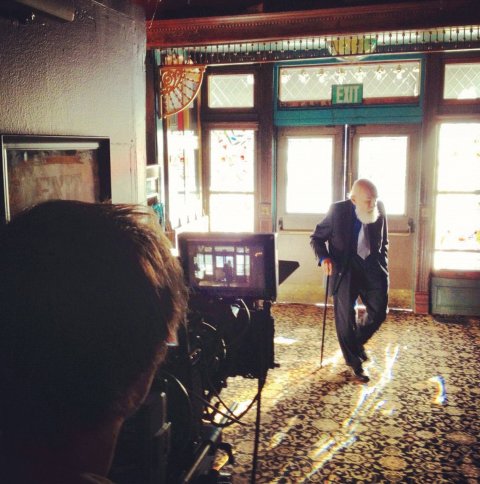
But it isn't just TV, or even mainly TV, that has proved to be a key factor in the struggle between skepticism and its adversaries. The Internet has also had an enormous impact. On the one hand, it has strengthened the skepticism movement by allowing it to reach more and more people. Yet it has simultaneously strengthened the anti-vaccination crowd, the homeopathy industry, and any number of similar movements. By breaking elite monopolies on information, the Internet has allowed pseudoscience to access ever-larger audiences.
Meanwhile, many of the people and ideas once discredited by skeptics keep coming back. A recent softball BBC documentary on the psychic Uri Geller shows him living in a stately English country house, a Brideshead built on bent spoons. He now tours as a motivational speaker and hosts various Geller-branded television programs. TV medium John Edward refuses to be tested by JREF, according to Randi, but still sells out major venues all over the country (a $160 ticket includes "question-and-answer sessions and messages from the other side"). Power Balance might have gone bankrupt, but it's back in business with new owners and new celebrity pitchmen. Peter Popoff, the faith healer Randi long ago exposed on Johnny Carson's show, is currently separating the sick from their savings by selling packets of "Miracle Spring Water."
But the intractability of woo-woo and religious belief hasn't dented Randi's spirit. His war against bullshit continues, even if it sometimes feels like a series of World War I–style battles—a little ground gained, a little ground lost, and it's impossible to tell who is winning. When we talk of the future, he grins and lifts up his hand, displaying a new wedding ring. "Shhh," he says, "I'm going to announce it at the conference." Last month, at age 84, Randi traveled from Florida—where gay marriages aren't legal—to Washington, D.C., in order to marry his partner, a pony-tailed Venezuelan national named Deyvi Pena. And it occurs to me that Randi's marriage, long prevented by a legal adherence to religious dogma and superstition, is something of a victory for skepticism.


